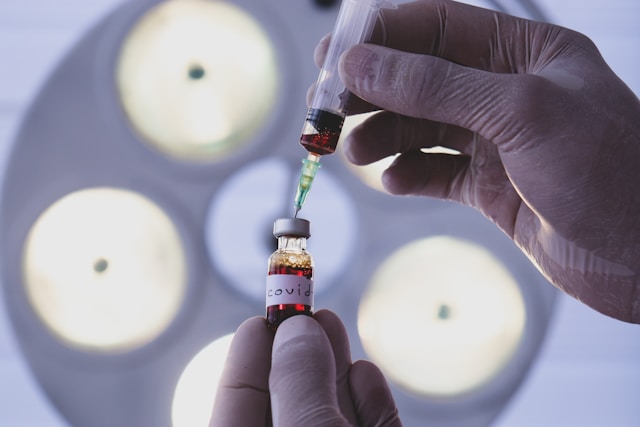Experts attribute the rise in colds, flu, and COVID-19 cases to warmer weather, crowded events, and inefficient air conditioning systems.
This summer, the UK has seen an unexpected spike in illnesses, with rising cases of Covid-19 and other respiratory infections. Public health experts are pointing to a combination of factors, including increased social gatherings, warmer temperatures, and inefficient air conditioning systems, as the key drivers behind this surge.
Dr Allen Haddrell, a research fellow at Bristol University, explains that while winter is typically associated with higher rates of illness, summer can also be a prime time for viruses to spread. “The rise in Covid-19 cases this summer is partly due to changes in population behaviour and indoor environmental conditions,” he says. According to the Health Security Agency, positive Covid-19 tests climbed from 4% in March to 14% by the end of June, with recent figures showing a further increase to 17% in early July.
Embed from Getty ImagesDr. Haddrell attributes the rise in cases to several factors. School holidays, summer festivals, and the aftermath of the UEFA European Championship (Euros) have brought together large groups of people in enclosed spaces, facilitating the spread of viruses. “Events like the Euros saw people gathering in pubs and bars for extended periods, often shouting and singing, which increases the risk of transmission,” he notes.
Another significant contributor to the rise in illnesses is the use of air conditioning in offices. Dr. Haddrell points out that many air conditioning systems simply recirculate air without introducing fresh ventilation. This can lead to a buildup of airborne viruses and exacerbate transmission rates. “In offices where windows are kept closed and air conditioning is used, the risk of illness can increase,” he explains.
The combination of increased social interactions and inefficient air circulation creates a perfect storm for viruses to thrive. The summer also sees people who didn’t catch Covid-19 during the winter beginning to fall ill as their immunity wanes. New variants of the virus, such as the FLiRT strain, which descended from the previous JN.1 variant and its parent subvariant BA.2.86, have also contributed to the surge in cases.
Public health experts emphasize the importance of maintaining preventive measures to curb the spread of illness. Dr. Haddrell advocates for improved ventilation, use of CO2 monitors to assess indoor air quality, and adherence to preventive measures like vaccination boosters and mask-wearing. “Even as we move through the pandemic, it’s crucial to continue employing these strategies to keep illness rates in check,” he says.
Analysis:
Political:
The summer surge in illnesses could prompt political action as government officials may face pressure to address public health concerns. Increased illness rates may lead to calls for updated health policies, improved building ventilation standards, and enhanced public health campaigns. Political leaders might also focus on securing funding for health initiatives and vaccination programs to manage and mitigate future outbreaks.
Social:
The rise in illnesses reflects broader societal trends, including the impact of social behavior on health. The increase in social gatherings and crowded events highlights how communal activities influence the spread of viruses. This situation could spark debates about the balance between social engagement and health risks. Public discussions might center around the effectiveness of current health measures and the need for continued vigilance in both personal and public spaces.
Racial:
The impact of the illness surge may vary across different racial and ethnic groups, potentially highlighting disparities in access to healthcare and preventive resources. Communities with limited access to health services or vaccination may experience higher illness rates. Ensuring equitable distribution of healthcare resources, including vaccinations and health education, is crucial for addressing these disparities and promoting overall public health.
Gender:
The gendered aspects of the illness surge could manifest in different ways. For instance, workplace policies and the impact of illness on gendered roles, such as caregiving responsibilities, might influence how men and women experience and manage illness. Additionally, societal norms and expectations regarding health behaviors could shape how different genders respond to and address illness during the summer months.
Economic:
The economic implications of the illness surge are significant. Increased illness rates can lead to higher healthcare costs and disruptions in productivity. Businesses may face challenges in maintaining operations due to employee absenteeism and the need for improved workplace health measures. Investing in better ventilation systems and health programs could become a priority for employers aiming to reduce the impact of illnesses on their workforce. Additionally, the economic burden of illness may prompt discussions about the need for comprehensive health insurance and support systems.
